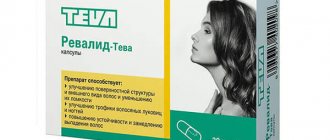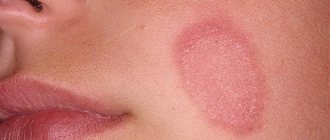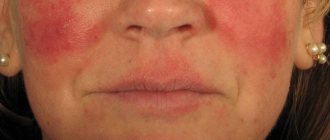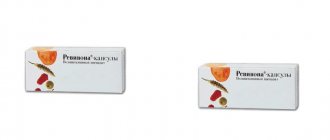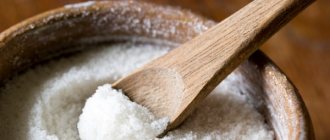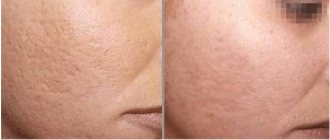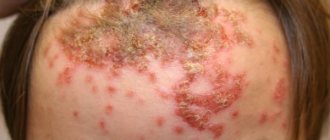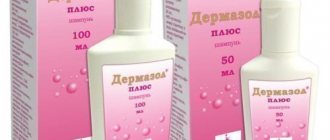Demodicosis is a serious skin disease that affects 3.5% of the inhabitants of our planet. Demodicosis is very similar in appearance to acne. Many people do not pay enough attention to treating the disease, believing that it will go away on its own. But demodicosis as a disease is dangerous due to its complications, and therefore requires comprehensive and thorough treatment.
Demodicosis resembles acne
General information about demodicosis
Demodicosis is acarodermatitis. This term means that the disease is caused by ticks. The main causative agent of the disease is the acne gland or demodex. Parasites can live in humans and other mammals. The size of the mites ranges from 0.2 to 0.5 mm; they settle in the ducts of the sebaceous glands and near the hair follicles. Parasites are located on the skin of the face (eyelids, brow ridges, forehead, nasolabial folds, chin), in the external auditory canal, in the upper back, on the chest. Any person can become a carrier of a tick, but not all carriers develop demodicosis.
At the initial stage of the disease, formations similar to acne appear on the skin. The parasitic infection gradually develops, the affected areas increase in size. Squashing acne makes the situation worse because microorganisms begin to get into the open wounds, and the mites are pressed into the deeper layers of the skin.
It is very difficult to treat demodicosis; there are tablets for demodicosis, special ointments and hardware therapy methods.
Demodicosis is caused by the demodex mite.
Factors stimulating the development of the disease
Demodicosis usually appears in adolescence and often affects pregnant women. This indicates that the disease does not develop on its own. Infection occurs against the background of disturbances in the body. Activation of demodexes in the skin is provoked by various internal and external factors. Internal ones include:
- hormonal imbalances (increased or decreased secretion of sex hormones, adrenaline, thyroid hormones),
- weakened immunity (the immune system is unable to respond to a parasitic infection),
- diseases of the gastrointestinal tract.
External factors stimulating mite activity:
- hormonal ointments (their use reduces local skin immunity),
- excessive exposure to ultraviolet radiation,
- the effect of hot water and steam (bath procedures).
Swimming in too hot water activates parasitic mites
Symptoms of demodicosis
Demodectic mange is easily confused with acne and some other types of dermatitis. They are similar in symptoms. General manifestations of demodicosis:
- Skin inflammation.
- Red spots.
- Formation of nodules, bumps, and rosacea on the skin.
- Enlarged pores.
- Peeling.
Distinctive features of demodicosis:
- seasonal exacerbations (spring and autumn),
- itching, which worsens in the evenings and after exposure to heat.
Demodicosis often develops in the sebaceous glands on the skin of the eyelids. Symptoms of eyelid damage by Demodex cannot be confused with another disease. These include:
- Inflammation of the eyelids.
- The appearance of purulent nodules and crusts along the edges of the eyelids.
- Feeling dry.
- Eyelash loss.
- Clumping of eyelashes.
A prolonged inflammatory process on the eyelids can lead to the development of conjunctivitis.
If any of the listed symptoms appear on the skin, you should consult a dermatologist to accurately determine the type of disease.
Sticking of eyelashes, one of the manifestations of demodicosis
CAUSES AND SYMPTOMS OF DEMODECOSIS
Mites can live in the roots of facial hair and eyelashes.
At risk are adolescents at the time of puberty, pregnant women, as well as those suffering from gastrointestinal diseases and those who have suffered stress.
Children before puberty are not at risk of the disease due to the insignificant activity of the sebaceous glands. After all, parasites feed on sebum: if there is little of it, the demodex (or “ironite”) has nothing to eat.
Demodicosis occurs as follows:
- The functioning of the sebaceous glands is disrupted.
- The quality and quantity of sebum changes.
- A microflora favorable for ticks is formed.
| HORMONAL DISBALANCE |
|
| GASTROINTESTINAL DISEASES |
|
| SEVERE STRESS | |
Symptoms of demodicosis
- Rash, pustules on the face or décolleté;
- Itching and discomfort;
- Lumps and ulcers on the face;
- Shine in the T-zone;
- Plaque in the eyelid area;
- Brittle and loss of eyelashes;
- Pale or purple complexion in advanced conditions.
We recommend: ALKALINE PEELING: gentle care & minimum contraindications
Precautionary measures
To identify the disease, it is necessary to conduct the following examinations:
Tests for demodicosis (Table)
| WOMEN | FOR MEN |
| Blood for hormones (gynecologist-endocrinologist) | Blood for hormones (endocrinologist) |
| Gynecological ultrasound | |
| |
In some cases, you also need to be tested for antibodies to thyroglobulin and have a gastroscopy.
Diseases with similar symptoms
Initially, it is necessary to correctly diagnose the problem in order to choose the right treatment strategy. It is important not to confuse with similar dermatological problems:
- Rosacea (papules),
- Folliculitis,
- Dermatitis,
- Spider veins,
- Fungal diseases
- Allergy.
Most often, acne and oily seborrhea are diagnosed simultaneously with demodicosis.
20 prohibitions for demodicosis (Table)
Even if there are no problems with the gastrointestinal tract, it is important to follow a diet and other restrictions during the treatment process.
EVERYTHING IS “NO” FOR DEMODECOSIS:
| IN NUTRITION |
|
| ON A REST |
|
| IN MAKEUP |
|
| IN CARE |
|
| FOR THE NIGHT |
|
The diet should include plenty of fruits and vegetables, Omega-3 and Omega-6 fatty acids (found in seafood).
We wash ourselves only with hydrophilic oil, foams or soft gel-like products. No alcohol or soap to maintain proper skin acidity.
Frequent washing with demodicosis will be harmful, so during the day it is better to use damp matting wipes.
Forms of demodicosis of the skin
Demodicosis does not always manifest itself in the same way; sometimes the disease is complicated by certain factors. There are several forms of demodicosis.
- Erythematous-squamous demodicosis. Its symptoms are redness, peeling of the skin, the formation of scales and small papules.
- Papular demodicosis. Appears as large red papules.
- Papulopustular demodicosis. Blisters filled with pus (pustules) appear on the skin.
- Rosacea-like demodicosis. The external manifestations are similar to the disease rosacea - rosacea appears on the skin.
- Combined demodicosis. The most common form. Manifestations of all forms of demodicosis occur on the affected skin.
If you do not pay attention to the problem in time and do not start treatment, or try to deal with the manifestations of demodicosis on your own, you can get serious complications.
Rosacea-like demodicosis manifests itself as rosacea
Diagnosis of demodicosis
Diagnosis of demodicosis is carried out in dermatovenerological clinics. First of all, scraping is done from the affected surface of the skin. If demodex mites are found, a diagnosis of demodicosis is made. Additional research is being conducted to select an effective treatment method.
- Blood tests (general, biochemical, glucose).
- Immunogram.
- Bacteriological culture of the nasopharynx.
- Stool analysis.
- Microscopic examination of fluid from sebaceous ducts and pustules.
Based on the results of clinical studies, the doctor makes a prognosis and prescribes a treatment plan.
Treatment regimen for facial demodicosis
In therapy, good results are achieved using a stepwise approach:
- The “foundation” of treatment is a balanced diet. The patient should eat portions of fruits, vegetables, proteins, and “good fats” each day.
- Stage 1 – daily use of special dermis care products. The medicinal and cosmetic gels “Demoten” and “Anti-cuperose” are recommended.
- The 2nd stage includes local therapy. The doctor prescribes antibacterial and antiprotozoal drugs: Elidel, Tacrolimus.
- Stage 3 – systemic therapy. Antibacterial drugs (Doxycycline), antiprotozoal drugs (Ornidazole) and retinoids (Isotretinoin) are prescribed.
Be sure to read:
Demodicosis of the eyes, eyelids and eyelashes: home treatment regimen and symptoms
The disease causes dry skin. To restore the level of hydration, Locobase and Pantoderm are used.
How is demodicosis treated?
Therapy for almost every skin condition must perform several tasks simultaneously. Demodectic mange is no exception. Therapy has several directions.
- Removal of the infecting agent (mite).
- Removing a concomitant infection if it appears (bacterial or fungal).
- Restoration of the skin and its normal functions.
- Increased immune strength.
To achieve the goals, drug and hardware treatment, as well as vitamin therapy, are used. The remedy for demodicosis should be selected by a doctor; it is advisable to consult a dermatologist and dermacosmetologist.
To make a diagnosis, you should consult a dermatologist
Demodicosis treatment on the face
There is no single effective treatment regimen for demodicosis. The use of classical drugs often does not give the desired results, moreover, it leads to aggravation and chronicity of the pathology. Patients require complex treatment followed by preventive care for the skin of the face and eyelids.
Be sure to read:
Demodicosis of the scalp: treatment at home, the best remedies and shampoos
Systemic and external therapy are prescribed. Since Demodex mite activity is often detected in acne, rosacea, blepharitis, seborrheic and atopic dermatitis, drugs that eliminate these diseases are first used. In addition to medicines, you can use folk remedies. They are used in parallel with traditional methods and only after consulting a doctor.
Folk remedies for demodicosis
If you are infected with Demodex mites, you can use folk recipes.
Homemade formulations are prepared from natural ingredients and are suitable for both therapy and prevention:
- Soap mask. Tar soap is dissolved in a small amount of water. Apply the solution to the affected area, leave for 1-2 minutes, then wash off. Process 2-3 times.
- Rubbing aloe. The plant has a bactericidal effect, relieves inflammation, and moisturizes the dermis. Freshly squeezed juice is applied to the affected area. Wash off after half an hour.
Traditional recipes are used in courses; only in this case can good results be achieved.
Preparations for the treatment of demodicosis of the eyelids
With parasitic dermatosis, eye damage is often detected.
Treatment is carried out with special ophthalmic drugs:
- Tobrex drops have a bactericidal, local antibacterial effect;
- Okomistin has an antimicrobial effect;
- Furacilin - wash the eyes with the solution before using the drops;
- Blepharogel suppresses the growth of pathogenic flora and replenishes vitamin deficiencies.
- Demazol cream has an antimicrobial effect and kills parasites.
It is important to maintain thorough eyelid hygiene. The eyes are washed with weak antiseptic solutions 3-4 times a day. Warm compresses are recommended - use cotton pads soaked in a warm infusion of chamomile and witch hazel.
Vitamins for facial demodicosis
The main etiological factor in the development of parasitic infection is the weakening of general and local immunity. To strengthen it, increase the consumption of vitamins. An important role is played by retinoids (vitamin A), tocopherol (E), vitamins D, C. They are found in large quantities in fresh vegetables, fruits, herbs, and fish.
To achieve the required concentration of microelements in the epidermis, vitamin complexes are taken. In severe forms of pathology, it is advisable to use Adapalene ointment and Klenzit-S gel.
Be sure to read:
What does a subcutaneous mite look like: causes and symptoms of the disease, how to quickly cure it
The best ointment for demodicosis on the face
External agents are used for any stage of demodicosis. Ointments and creams are selected individually; there is no one universal drug, since the drugs have different pharmacological properties.
When affected by Demodex saprophyte, a number of external medications are recommended:
- Benzyl benzoate ointment causes the death of larvae and adult parasites.
- Salsen reduces the growth of epidermal cells and epithelial follicles, reduces peeling.
- Sulfur ointment has antimicrobial and antiparasitic effects.
- Isotrexin gel prevents the colonization of pathogenic microorganisms.
For increased oily skin caused by hypersecretion of the sebaceous glands, glucocorticosteroid creams and ointments are prescribed.
Can Ornidazole be used for acne?
Ornidazole is a drug used to treat pathologies caused by single-celled organisms. The remedy is one of the main ones included in the therapeutic course of a parasitic disease.
Tablets are taken for systemic therapy. They have no effect on ticks, but are active against anaerobes and gram-positive microorganisms carried by the gland on its suction cup legs. It is these organisms that cause pathological changes in the upper layer of the epidermis and hair follicles.
Elimination of pathogens leads to a decrease in the inflammatory process. The protective functions of the dermis are restored, the activity of parasites decreases, and the disease recedes.
Is salicylic acid effective for demodicosis?
With a parasitic disease, opportunistic microorganisms are activated. They cause an inflammatory reaction, pimples filled with serous-purulent exudate. Salicylic acid has an antiseptic and anti-inflammatory effect.
Wiping the affected areas helps cleanse the dermis of pus and eliminate perifocal (occurring in the circumference of the affected area) inflammation. Salicylic acid dissolves and accelerates the shedding of the stratum corneum on which parasites feed. The use of the solution creates an unfavorable environment for the reproduction of the gland, which contributes to the onset of remission.
Drug therapy for demodicosis
Using a whole range of medications will help you completely get rid of demodicosis and its external manifestations.
- Acaricidal preparations for demodicosis. Destroy demodex. These are mainly ointments for external local use - benzyl benzoate, zinc, sulfur, ichthyol, permethrin, aversectin ointments, products with metronidazole.
- Local antibiotics. Gels are usually prescribed and applied to the affected areas of the skin.
- Keratolytics. Products that cause exfoliation of dead epidermal cells. Improves the appearance of the skin. The most common keratolytic is salicylic acid.
- Immunomodulators.
Every year ticks become more and more resistant to existing drugs. Permethrin ointment is no longer very effective in fighting parasites and helps few people. Currently, pharmacological companies and research centers are developing new medicinal acaricides.
Ichthyol ointment, an acaricidal drug
About the principles of treatment
Experts believe that in pursuit of a quick effect, one should not forget about the danger of ending up with over-treated skin. Complete removal of the tick leads to an imbalance of the natural microflora on the face, damage to the protective barrier, and increased skin sensitivity. Treatment must be comprehensive and comprehensive, taking into account all existing associated problems in the body.
It will also be interesting: Is Papillock a scam?
What principles should therapy be based on:
- prescription of systemic drugs orally (Trichopol);
- local exposure to traditional acaricides (Benzyl benzoate, Sulfur ointment, Permethrin, etc.) and drugs based on azelaic acid (for example, Skinoren);
- treatment of all foci of chronic infection in the body;
- using sunscreen before going outside;
- diet – exclude alcohol, fast food, sweets, hot drinks, fatty foods;
- proper organization of daily facial skin care - exclude all oil-based cosmetics;
- competent and mandatory washing in the morning and evening before applying medications to the skin.
Good sustainable results can only be achieved by combining all of the above points for 1.5-2 months. The treatment regimen for demodicosis is selected individually in each case. An important condition is a thorough collection of anamnesis in order to accurately establish the cause of the development of demodicosis and the involvement of doctors of different specialties to help the patient if necessary (gynecologist, endocrinologist, gastroenterologist, etc.).
Vitamin therapy for demodicosis
Vitamins are low molecular weight compounds that have strong biological activity. These substances are involved in the regulation of all functions of organs, tissues and cells. Vitamins for demodicosis help improve the overall condition of the skin and increase the body's resistance to infection.
- Group A. Vitamins that dissolve in fats easily penetrate cell membranes. Affect the growth of the body. Vitamin deficiency leads to dry skin and the appearance of acne. The vitamin is found in fish oil, pork and beef liver, butter, spinach and lettuce leaves, and green onions. You can buy fish oil in gelatin capsules at the pharmacy.
- Group B. Belong to water-soluble vitamins. Contained in liver, cereals (buckwheat, rice, millet), beans and potatoes.
- B1 (thiamine) – regulates carbohydrate metabolism, maintains normal functioning of the heart and nervous system.
- B2 (riboflavin) – regulates cell division processes and protein metabolism.
- B5 (pantothenic acid) - takes part in oxidation reactions, metabolism of proteins, fats and carbohydrates, synthesis of fatty acids (components of cell membranes).
- B6 (pyridoxine) – is involved in the regulation of metabolic processes and hematopoiesis.
- B12 (cyanocobalamin) – has the highest biological activity in its group. Participates in the processes of hematopoiesis, in the synthesis of amino acids and other compounds important for the body.
- Vitamin C (ascorbic acid). Participates in the body's redox reactions, is a strong antioxidant, and improves immunity. Contained in vegetables and fruits.
- Vitamin E (tocopherol). Fat-soluble vitamin. Works in cell membranes, is an antioxidant (its effect is enhanced by vitamin C). Contained in vegetable oils.
Vitamin therapy helps normalize the condition of the skin and ensure its renewal. When treating demodicosis, tableted vitamin complexes or a special diet are prescribed.
Tocopherol (vitamin E) is found in vegetable oils
COSMETOLOGY IN THE TREATMENT OF DEMODECOSIS
Classic treatment regimen: acaricidal drug + antibiotic + talker (for example, Vidal's milk).
To prevent symptoms from appearing again , we must add to the complex:
| SEBO-REGULATING MEDIUMS |
|
| ACIDS FOR pH REGULATION |
|
We apply chatterers 1-2 times a day only on problematic elements before going to bed (parasites are most active at night). It is strictly forbidden to apply it to the entire face: the mantle of the skin becomes thinner.
It is forbidden to squeeze out pimples and comedones, otherwise the source of infection will become larger.
Is it possible to do peeling with demodicosis?
Acid peels can be a good way to combat hyperkeratosis that causes demodicosis.
Acaricides penetrate the skin better, resulting in increased treatment effectiveness. For this purpose, for example, Dimexide is used.
It is worth remembering that a 5-minute test for demodicosis is required before the peeling course. The concentration of drugs and the frequency of procedures are prescribed by a dermatologist-cosmetologist.
IMPORTANT: Demodicosis may be a contraindication for peeling.
Is it possible to make a scrub for demodicosis?
Unlike peeling, scrubs for demodicosis are strictly prohibited because:
- Increases irritation and peeling,
- Dehydrate,
- Acne spots spread across the face.
What other procedures are prohibited for demodicosis?
After treatment, redness and rash may appear on the face. The lipid barrier must be restored.
Therefore, most peels, microdermabrasion, and laser resurfacing are prohibited for 1.5-2 months.
Contraindications for peeling for demodicosis
During pregnancy, peeling should be replaced with mattifying serums and gel masks. Acids are dangerous due to pigmentation.
Hardware treatment of demodicosis. Cryotherapy
Hardware treatment effectively removes manifestations of demodicosis. The most common way to combat the disease is cryotherapy. The method uses liquid nitrogen. In the clinic, an applicator that releases gas vapor is used to treat the affected areas of the skin using rotational movements. The procedure is repeated twice every ten minutes. Damaged surfaces are treated until the skin turns slightly white. After such cryomassage, persistent redness appears.
A more comfortable and advanced way to combat the manifestations of demodicosis is the action of a nitrogen-air jet. The method is softer, the skin is practically not injured. You can adjust the temperature of the gas mixture.
Cryopilling and cryodermabrasion
In addition to cryomassage, cryopilling and cryodermabrasion are performed. These are methods of cleansing the face from dead and rough skin.
For a full course of treatment of demodicosis, more than 10 cryotherapy procedures are needed.
Physiotherapeutic procedures can also be used to treat demodicosis, but only as prescribed by a doctor. The following types of physiotherapy are suitable for this type of dermatosis:
- UHF, the action of a high frequency electromagnetic field on the skin,
- UV - irradiation,
- laser therapy.
Physiotherapy aims to improve the condition and natural functions of the skin.
To eliminate demodicosis you need at least 10 cryopilling procedures
About skin care
With demodicosis, not only does the amount of sebum increase, but its qualitative characteristics also change, for example:
- bactericidal properties decrease;
- PH changes to the alkaline side;
- natural hydration decreases.
Therefore, in the complex treatment of demodicosis, it is very important to use sebum-regulating agents that help reduce the amount of sebum, as well as acids to restore normal skin reaction and achieve a keratolytic effect.
What not to do with demodicosis:
- visit solariums, baths and saunas, take hot baths for the face;
- use fatty creams and oils, various nourishing masks that feed ticks;
- squeeze out pimples and blackheads with your hands;
- do facial massage;
- use decorative cosmetics, foundation, compact powder, cream powder (loose powder can be used occasionally);
- apply a facial scrub during treatment;
- go to bed without cleansing your face - cosmetics should be washed off with warm water along with dust, sebum and exfoliated epithelium, so as not to feed the tick at night.
You may also be interested in: Facial care for demodicosis: skin moisturizers
What can be done for demodicosis in a cosmetologist’s office:
- cryomassage with liquid nitrogen (this is better than just using ice at home) - usually carried out towards the end of the main therapy, several courses will help get rid of the tick, relieve inflammation and improve skin microcirculation;
- cryosauna – increases immunity, but a doctor should tell you about contraindications;
- the use of chemical facial skin cleansers (salicylic, pyruvic, almond procedures) - such peeling for demodicosis is used after or at the end of treatment to correct traces of the disease and prevent relapses, it has an anti-inflammatory effect, reduces sebum secretion, and narrows pores.
What to do at home:
- wash your face in the morning and before bed with water at room temperature or acid washes with AHA (glycolic acid) and BHA acids;
- wipe your face with ice every day, better in the morning instead of washing your face - ice can be made from herbal infusions (parsley, calendula) or cucumber juice;
- make moisturizing masks (gel masks) 1-3 times a week.
